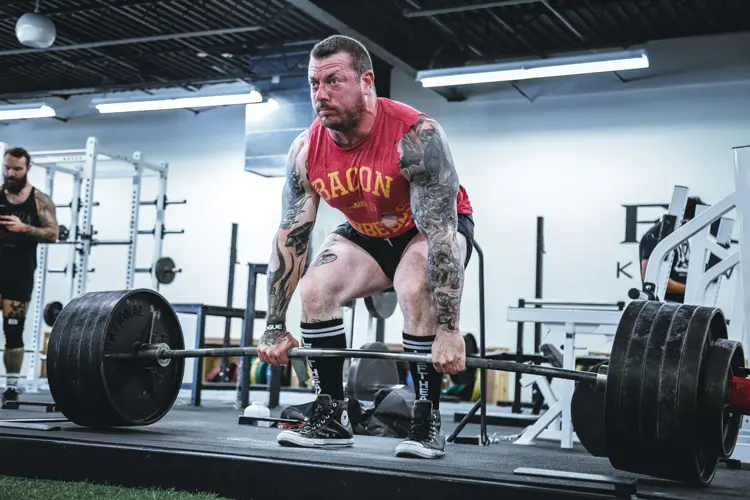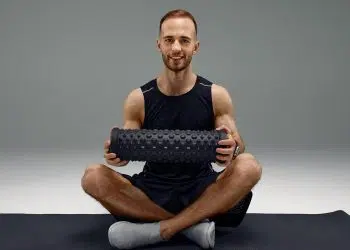Improving strength and performance is the ultimate goal for all athletes and lifters. Evidently, one of the biggest factors that will determine success is the training you engage in.
With so many different training programs and methodologies out there, it can be difficult to know which program to use.
Most training programs use something known as periodization which helps provide structure and optimizes progress.
This article will review two commonly used periodized models – block and linear – to determine which one maximizes your strength and performance most effectively.
What is Periodization?
Periodization refers to the long-term cyclic structuring of physical training. The purpose of periodization is to optimize the rate of adaptation and maximize performance.
There are a number of periodized models to choose from, each which have their own unique uses and benefits. These include linear, reverse linear, block, and undulating periodization.
Level Up Your Fitness: Join our 💪 strong community in Fitness Volt Newsletter. Get daily inspiration, expert-backed workouts, nutrition tips, the latest in strength sports, and the support you need to reach your goals. Subscribe for free!
Although the desired final outcome is the same, each periodized model manipulates training variables, such as volume and intensity, in different ways.

Depending on the length of the program, training is typically structured using cycles known as macrocycles, mesocycles, and microcycles.
A macrocycle refers to the program in its entirety from start to finish. Macrocycles typically span over the course of a year or longer.
Mesocycles are specific blocks within the macrocycle. Typically mesocycles will focus on specific fitness components or types of training and will last for two to six weeks.
Finally, microcycles are the small weekly units that make up each mesocycle. It is within the microcycles that you will find the training sessions.
Structuring training in this way is extremely valuable for athletes and will ensure that performance peaks in time for competitions.
While periodization will be used by almost all sporting professionals, periodized programs are not exclusively for the athlete.
The majority of gym goers do not use periodized programs, however, there is great value to be found in doing so.
Why Should I Use Periodized Training?
Firstly, and most importantly, periodization gives structure to your training.
Too many lifters attend the gym with no real structure or training plan in place. As a result, training sessions may be disjointed causing progress to be slow or substandard.
However, studies have shown that by utilizing periodized training, it is possible to maximize strength, size, and power progress (1).
As briefly touched on, periodized programs can also ensure that performance is optimized at specific times.
For example, powerlifters can use periodization in order to peak their strength in concurrence with a competition.
Training without a periodized program may also increase the risk of undertraining or overtraining.
Without a tailored program to guide you, it is entirely possible to train with inadequate intensity or volume. As a result, the body will fail to adapt optimally.
On the other hand, overtraining is a syndrome that occurs when individuals apply too much stress to the body without providing adequate recovery periods.
Instead of making progress, overtraining will detrimentally impact your performance. Additionally, it can lead to chronic fatigue and an increase in the risk of sustaining injury.
Not only will following a periodized program optimize training progress, but it will also help to manage fatigue levels and reduce the risk of injury (2).
Block Periodization
As the name suggests, this approach involves breaking down the macrocycle into three distinct mesocycles or “blocks”.
These three blocks are known as accumulation, transmutation, and realization. Depending on the individual, their goals, and competition date, the length of each of these blocks varies.
In the accumulation block, a great volume is used with the goal of improving motor skills and work capacity. Intensity is normally maintained at 50 – 70% throughout this block.
With the transmutation phase, the goal is to evolve general skill into more specific skill. Intensity increases to 75 – 90%, however, training volume begins to decrease during this block.
Finally, you have the realization phase where the trend continues. Intensity increases to 90% or more and training volume significantly decreases once again.
Level Up Your Fitness: Join our 💪 strong community in Fitness Volt Newsletter. Get daily inspiration, expert-backed workouts, nutrition tips, the latest in strength sports, and the support you need to reach your goals. Subscribe for free!
Perhaps a simpler way of understanding block periodization is to focus on the fitness components each block develops.
The accumulation block focuses on hypertrophy, transmutation develops strength and realization targets power.
Linear Periodization
The most popular training structure is linear periodization (sometimes referred to as “traditional periodization”).
The method involves gradually increasing training intensity while decreasing training volume (sets and reps). Intensity tends to be increased through incremental increases in weight lifted.
Intensity will continue to be added and volume reduced for a specified period of time before reaching a peak. After this peak has been reached, a deload week is often performed.
Traditionally, linear programs are run for a year in total.
Linear periodization is most commonly used by beginners as it is very simple to understand and execute.
Furthermore, beginners are often able to improve a lot more rapidly than intermediate and advanced lifters.
While not fully understood, this phenomenon is well documented and is thought to be due to adaptations to the nervous system (3).
Therefore, a linear program will most effectively allow beginners to add weight to each lift and maximize strength development.
Which is Best?
So, which periodization model should you be using? There are a couple of considerations that need to be taken into account before determining the model that suits you best.
Firstly, as mentioned, linear periodized programs are highly recommended for absolute beginners. They are straightforward and will maximize strength development.
However, for those who are a little more advanced, linear periodized programs may not cut it.
The body is a clever machine that adapts to its environment and stresses. Therefore, having followed a linear program for a time, you may find that the body stops adapting.
This occurs as the body has become accustomed to the training stimulus. In order to move beyond this plateau, it may be necessary to employ a different training model.
Therefore, block periodization serves as an excellent choice as it is a more advanced model than linear periodization.
Interestingly, there has been a study conducted on block and linear periodization (4). The goal of the study was to determine which model was best.
Before subjects began their training, each was taken through an array of assessments that evaluated strength, power, and explosiveness.
The subjects of the study were then assigned to either a block or linear program. These programs involved four workouts per week and ran for a total of fifteen weeks.
To ensure validity, both the block and linear training programs utilized the same exercises and training volume.
The only difference between the two programs was the timings of intensities and volumes.
At the end of the fifteen weeks, the researchers retested the participants and reviewed the results.
They concluded that block periodization was more effective than linear periodization. Improvements in upper body strength and power were significantly greater in the block periodized group.
That said, it should be noted that there was no significant difference in lower body strength and power. This may be down to the fact that the frequency used in training was insufficient.
It can be concluded that, based on these results, block periodization is more effective than linear periodization programs for developing strength and performance.
However, it must be noted that linear programs typically run for a year whereas block programs run in shorter cycles.
Therefore, because this study only ran for fifteen weeks, the full effects of the linear program may not have been experienced. Future research should compare both methodologies over a longer time frame.
Final Word
There are many benefits to be found with periodized training programs. They are unequivocally the best method of optimizing your strength and performance.
In regard to periodization models, block periodization appears to be more effective than linear periodization. However, linear programs do have their unique uses and benefits.
References:
- Lorenz, Daniel; Morrison, Scot (2015-11). “CURRENT CONCEPTS IN PERIODIZATION OF STRENGTH AND CONDITIONING FOR THE SPORTS PHYSICAL THERAPIST”. International Journal of Sports Physical Therapy. 10 (6): 734–747. ISSN 2159-2896. PMC 4637911. PMID 26618056.
- Strohacker, Kelley; Fazzino, Daniel; Breslin, Whitney L.; Xu, Xiaomeng (2015-05-06). “The use of periodization in exercise prescriptions for inactive adults: A systematic review”. Preventive Medicine Reports. 2: 385–396. doi:10.1016/j.pmedr.2015.04.023. ISSN 2211-3355. PMC 4721364. PMID 26844095.
- Sale, D. G. (1988-10). “Neural adaptation to resistance training”. Medicine and Science in Sports and Exercise. 20 (5 Suppl): S135–145. doi:10.1249/00005768-198810001-00009. ISSN 0195-9131. PMID 3057313.
- Bartolomei, Sandro; Hoffman, Jay R.; Merni, Franco; Stout, Jeffrey R. (2014-04). “A comparison of traditional and block periodized strength training programs in trained athletes”. Journal of Strength and Conditioning Research. 28 (4): 990–997. doi:10.1519/JSC.0000000000000366. ISSN 1533-4287. PMID 24476775.














Very useful article